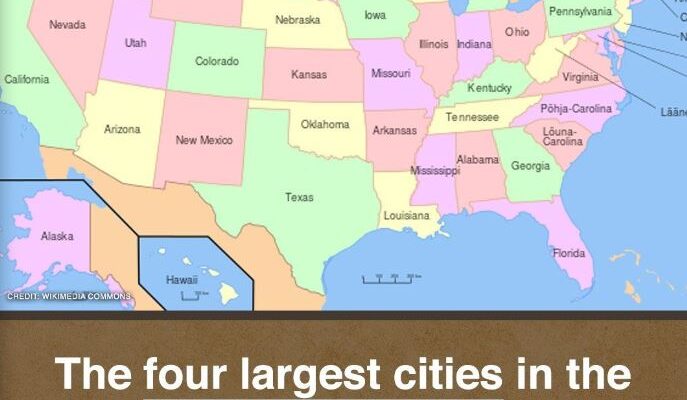Geography is a wide discipline, spanning the study of people, places, and cultures. Some geographical facts we might take for granted, like the names of rivers, the number of continents, or the shapes of countries. Identifying the biggest and smallest in geography isn’t easy, with myriad ways to determine something’s size. Population, area, lengths – so many ways to measure, so little time.
With size as a fundamental part of geography, it might not resonate that looks can be deceiving. What appears to be the biggest country in the world may need qualification, while what goes on below the surface of the Earth tells a story in and of itself. As we tried to wrap our heads around the many size-related parts of geography, we came upon some pretty shocking facts. It turns out some of what we thought we knew about geography wasn’t true at all. Actually, there’s a lot about geography size facts that are a much bigger deal than we could have ever imagined.
Residents Of Papua New Guinea Speak About 840 Different Languages
There are living languages, dead languages, and even languages that remain to be developed. Countries with diverse populations and large groups of people have individuals who speak native and foreign languages alike, but a relatively small part of the world is home to more than 840 different languages.
In Papua New Guinea, where roughly 9 million people live, the longevity of native languages is the result of its remote, isolated setting. The official languages of Papua New Guinea are English, Tok, sign language, and Hiri Motu.
Indonesia, with numerous islands and ethnic groups, has more than 700 different languages spoken within its boundaries, while Nigeria, with 206 million people, is home to about 520 languages.
Sweden Has More Than 267,000 Islands
Sweden has 267,570 islands, many of which are in the Arctic, and Norway is close behind with 239,057. The majority of islands in both Sweden and Norway remain uninhabited. Finland has more than 150,000, with Canada, the US, and Indonesia claiming between 50,000 and 17,000.
Although only about 2,000 of the Philippine Islands are inhabited, the Republic encompasses about 7,640 individual islands. There are 7,000 islands in the Wider Caribbean Region, an area of more than 1 million square miles.
The Four Largest Cities In America Are Located In Alaska
The most populous cities in the US are New York and Los Angeles. New York is home to more than 8 million people, more than double the number of people living in Los Angeles. Chicago and Houston are third and fourth in population, but the largest four cities, by area, are all located in Alaska.
Sitka is 2,870 square miles in area, while Juneau and Wrangell similarly span more than 2,500 square miles. Anchorage is 1,704 square miles. For comparison, the largest city by area in the contiguous US – Jacksonville, FL – is only 747 square miles. New York City is about 320 square miles and Los Angeles is roughly 500 square miles.
There’s Enough Gold On Earth To Cover The Surface Area Of The Planet
Researchers have determined there is enough gold below the surface of the planet to coat Earth in a layer of the precious metal as much as 18 inches thick. According to geologist Bernard Wood in 2006, “more than 99% of the Earth’s gold is in the core,” but, “it’s a nice image to think we could all step outside and be knee-deep in the stuff.”
There are actually numerous precious metals in and on Earth, including platinum and tungsten, that could plate the planet in as much as 4 meters, or about 12 feet, of material.
Bangkok’s Full Name Is More Than 160 Letters
Krung Thep Mahanakhon Amon Rattanakosin Mahinthara Ayuthaya Mahadilok Phop Noppharat Ratchathani Burirom Udomratchaniwet Mahasathan Amon Piman Awatan Sathit Sakkathattiya Witsanukam Prasit.
The city of angels, the great city, the residence of the Emerald Buddha, the impregnable city (of Ayutthaya) of God Indra, the grand capital of the world endowed with nine precious gems, the happy city, abounding in an enormous Royal Palace that resembles the heavenly abode where reigns the reincarnated god, a city given by Indra and built by Vishnukarn.
France Has More Time Zones Than Russia
Russia has 11 time zones, which means it can be 8 am on Tuesday in Petropavlovsk-Kamchatsky (in the easternmost regions of the country) and only 10 pm the night before in Kaliningrad (in the west). Because Russia is so large and has the prime meridian passing through it, it is day and night as well as today and tomorrow all at the same time, depending on where one stands.
The US also has 11 time zones (four in the contiguous US), but neither Russia nor the US have the largest number of zones in the world. With its territorial possessions and a presence in the Antarctic, France has 12 time zones, the most of any country in the world.
Mount Augustus In Australia Is The Largest Rock On The Planet
It may look like a mountain, but Mount Augustus (called Burringurrah by the Wajarri Aboriginal people) is actually an inselberg – an “island mountain” – located in the Western part of the continent. Inselbergs are not unique to Australia, with the geological features present in Africa and the Middle East as well.
Mount Augustus holds distinction as the largest inselberg on Earth, measuring more than 6 miles long and about 3 miles wide. It reaches higher than 3,000 feet above sea level, rivaling the elevation of Western Australia’s actual tallest mountain, Mount Meharry (which peaks at about 4,100 feet.)
Mount Augustus is about 1,000 million years old and sits on granite that could date back 1,650 million years.
One Drop Of Water Travels The Length Of The Mississippi River In 90 Days
From its start at Lake Itasca in Minnesota to its termination at the Gulf of Mexico, the Mississippi River runs for 2,318 miles through 10 American states. The Mississippi is only the second-longest river in the US, falling behind one of its own tributaries, the Missouri River. When measured together, the Mississippi and Missouri constitute the fourth-longest river system on Earth.
The length of time it takes a single drop of water to run from Lake Itasca to New Orleans, where the Mississippi River ends, is 90 days. The average speed of the Mississippi is 1.2 miles per hour, although the rate varies at different locations. The discharge of water from the Mississippi makes it the most powerful in the US.
Mount Everest Isn’t The Tallest Mountain In The World
While Mount Everest’s peak rises to the highest point above sea level on Earth, the largest mountain from base to peak is Mauna Kea on the big island of Hawaii. A dormant volcano, its name means “White Mountain,” which it earned from its snow-filled peaks – not often associated with Hawaii.
Mount Everest, which officially stands 29,032 feet, is still rising, according to geologists. Even with its continued changes, Mauna Kea is still substantially taller, officially measuring higher than 33,500 feet.
To complicate things even more, neither Mount Everest nor Mauna Kea can claim a peak that’s farthest from the center of the Earth. That honor falls to Mount Chimborazo in Ecuador. Because Chimborazo sits on the centrifugal bulge near the equator, it’s technically farthest from the Earth’s core.
The Pacific Ocean Is Shrinking, But The Atlantic Ocean Is Expanding
As the tectonic plates of Earth shift, the shape of the sea floor necessarily changes. The movement of plates has caused the Americas to move farther away from Europe and Africa, essentially sending them toward Asia and Australia.
As a result, the Pacific Ocean has become smaller, while the Atlantic Ocean continues to grow by a few centimeters annually. As plates move under the Pacific, there’s more folding over and subduction, while the Atlantic experiences a widening, or divergence, of its numerous trenches.
Africa Is The Only Continent In All Four Hemispheres
Due to its size and location, Africa is the only continent through which the equator and the prime meridian cross. As a result, parts of Africa fall into each of the four hemispheres of the Earth.
The equator nearly splits Africa in half, running through countries like the Republic of the Congo, Kenya, and Somalia. The prime meridian traverses Mali, Algeria, and Ghana.
Narrowing down even further, several islands similarly fall into all four hemispheres. Collectively called the Kiribati Islands, the group of 32 atolls and one larger island are scattered throughout the central Pacific Ocean.














